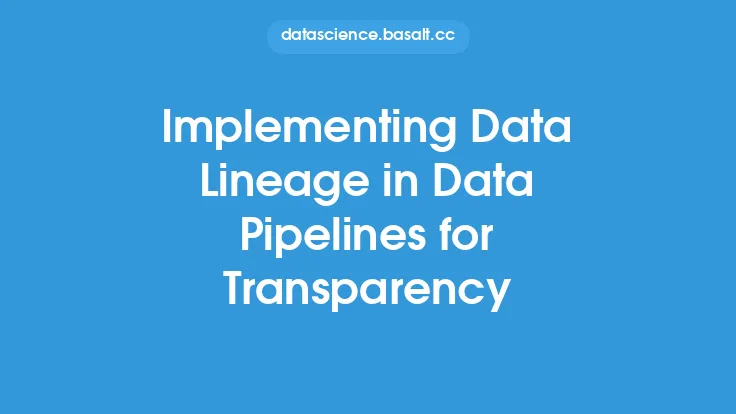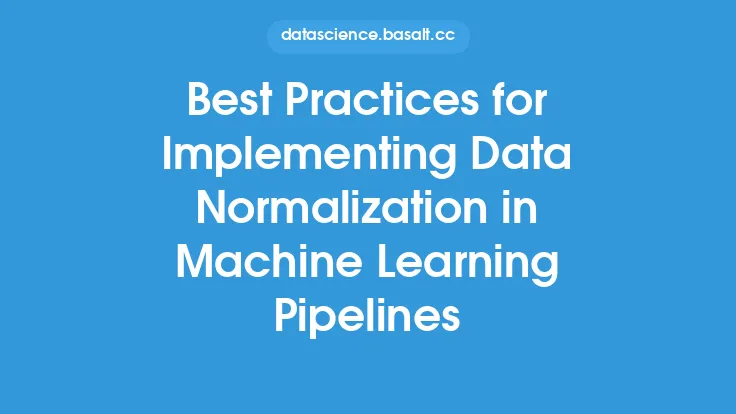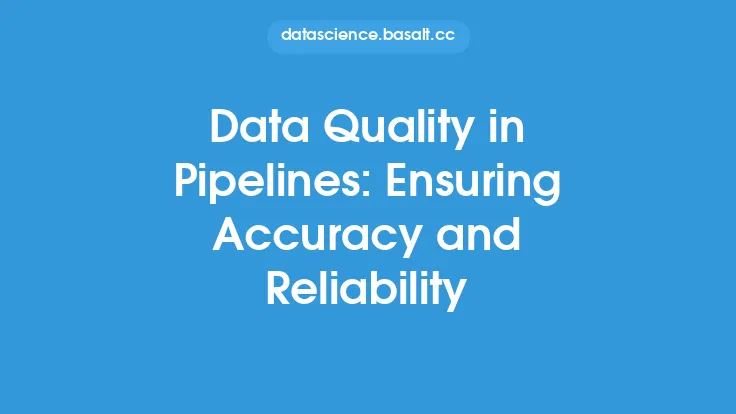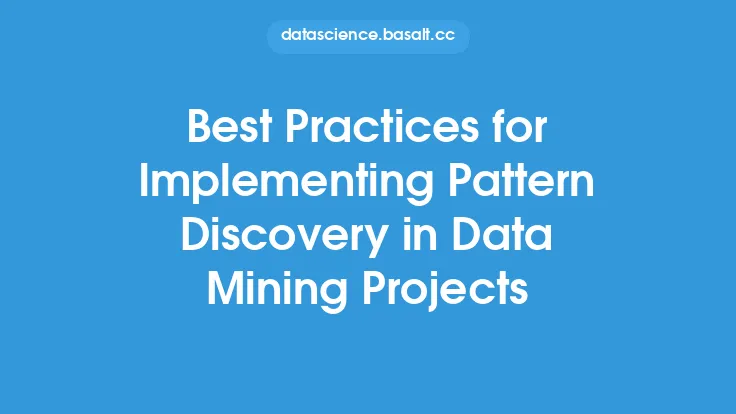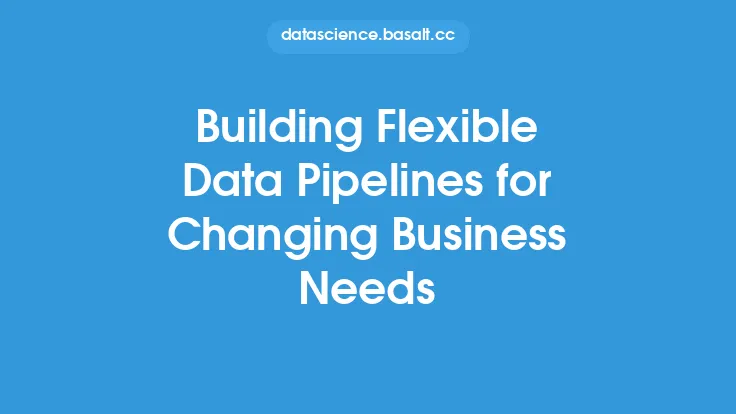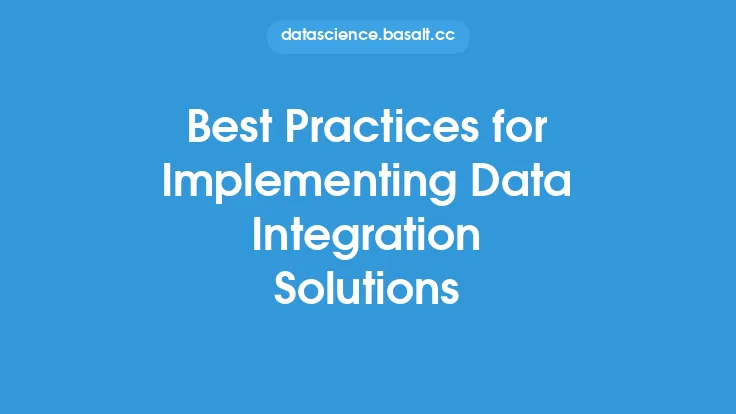Data validation is a critical component of data pipelines, ensuring that data is accurate, complete, and consistent before it is used for analysis, reporting, or other purposes. Implementing data validation in data pipelines is essential for maintaining high data quality, which is critical for informed decision-making, reliable analytics, and effective business operations. In this article, we will delve into the details of implementing data validation in data pipelines, exploring the concepts, techniques, and best practices for ensuring data quality.
Introduction to Data Pipelines
A data pipeline is a series of processes that extract data from multiple sources, transform it into a standardized format, and load it into a target system, such as a data warehouse or data lake. Data pipelines are used to integrate data from various sources, including databases, files, and applications, and to prepare it for analysis, reporting, or other uses. The data pipeline process typically involves several stages, including data ingestion, data processing, data transformation, data quality checking, and data loading.
Data Validation Concepts
Data validation involves checking data for errors, inconsistencies, and inaccuracies, and ensuring that it meets the required standards and formats. There are several key concepts related to data validation, including:
- Data quality: Refers to the accuracy, completeness, and consistency of data.
- Data integrity: Refers to the consistency and accuracy of data across different systems and sources.
- Data validation rules: Define the criteria for checking data, such as data formats, ranges, and relationships.
- Data validation techniques: Include methods such as data profiling, data cleansing, and data transformation.
Implementing Data Validation in Data Pipelines
Implementing data validation in data pipelines involves several steps, including:
- Defining data validation rules: Identify the data validation rules and criteria for checking data, based on business requirements and data quality standards.
- Data profiling: Analyze the data to understand its distribution, patterns, and relationships, and to identify potential errors or inconsistencies.
- Data cleansing: Cleanse the data by correcting errors, filling in missing values, and transforming data into the required formats.
- Data transformation: Transform the data into the required formats, such as aggregating data or converting data types.
- Data quality checking: Check the data for errors, inconsistencies, and inaccuracies, using data validation rules and techniques.
- Data loading: Load the validated data into the target system, such as a data warehouse or data lake.
Data Validation Techniques
There are several data validation techniques that can be used in data pipelines, including:
- Data type checking: Verify that data is of the correct data type, such as integer, string, or date.
- Range checking: Verify that data is within a specified range, such as a valid date range or a valid value range.
- Format checking: Verify that data is in the correct format, such as a valid email address or a valid phone number.
- Relationship checking: Verify that data relationships are correct, such as verifying that a customer has a valid address.
- Data profiling: Analyze the data to understand its distribution, patterns, and relationships, and to identify potential errors or inconsistencies.
Best Practices for Implementing Data Validation
There are several best practices for implementing data validation in data pipelines, including:
- Use automated data validation: Use automated tools and techniques to validate data, rather than manual processes.
- Use data validation frameworks: Use data validation frameworks, such as Apache Beam or Apache Spark, to simplify the data validation process.
- Use data quality metrics: Use data quality metrics, such as data accuracy and data completeness, to measure data quality.
- Use data validation rules: Use data validation rules to define the criteria for checking data, and to ensure consistency across different systems and sources.
- Continuously monitor data quality: Continuously monitor data quality, and update data validation rules and techniques as needed.
Tools and Technologies for Data Validation
There are several tools and technologies that can be used for data validation, including:
- Apache Beam: A unified programming model for both batch and streaming data processing.
- Apache Spark: A unified analytics engine for large-scale data processing.
- Data quality tools: Such as Trifacta, Talend, and Informatica, which provide data quality and data validation capabilities.
- Data validation frameworks: Such as Great Expectations, which provide a simple and flexible way to validate data.
Conclusion
Implementing data validation in data pipelines is essential for maintaining high data quality, which is critical for informed decision-making, reliable analytics, and effective business operations. By understanding the concepts, techniques, and best practices for data validation, organizations can ensure that their data is accurate, complete, and consistent, and that it meets the required standards and formats. By using automated data validation tools and techniques, and by continuously monitoring data quality, organizations can simplify the data validation process, and ensure that their data is reliable and trustworthy.
